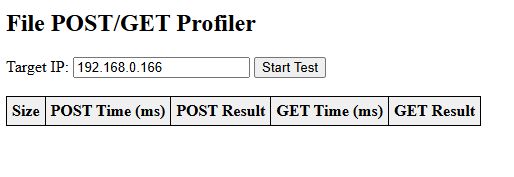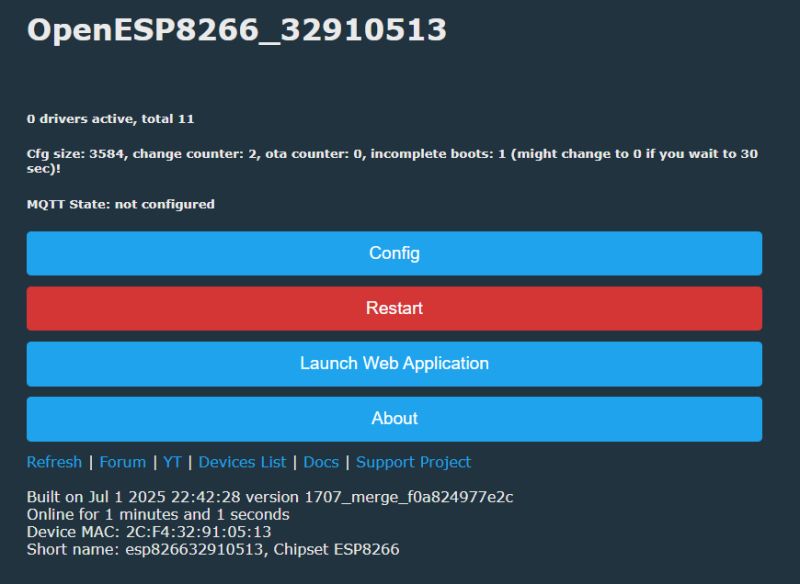
2mb version to 4mb board. not tested anything
https://github.com/openshwprojects/OpenBK7231T_App/pull/1707
Added after 15 [minutes]:
boot to AP looks like:
Code: Text
Czy wolisz polską wersję strony elektroda?
Nie, dziękuję Przekieruj mnie tam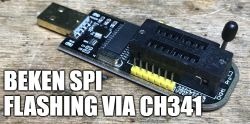
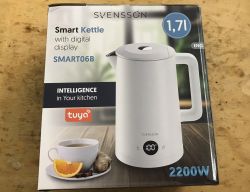

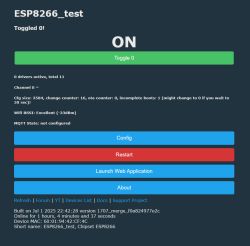
Info:MAIN:Time 4156, idle 0/s, free 32560, MQTT 0(260), bWifi 1, secondsWithNoPing 4090, socks 0/0
Info:MAIN:Time 4157, idle 0/s, free 32560, MQTT 0(260), bWifi 1, secondsWithNoPing 4091, socks 0/0
Info:MAIN:Time 4158, idle 0/s, free 32560, MQTT 0(260), bWifi 1, secondsWithNoPing 4092, socks 0/0
Info:MAIN:Time 4159, idle 0/s, free 30648, MQTT 0(260), bWifi 1, secondsWithNoPing 4093, socks 0/0 while(1)
{
int len = uart_read_bytes(uartnum, data, 512, 20 / portTICK_RATE_MS);
if(len)
{
for(int i = 0; i < len; i++)
{
UART_AppendByteToReceiveRingBuffer(data[i]);
}
}
}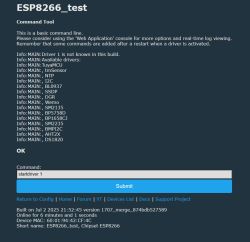
[00:43:42]Info:MAIN:Time 411, idle 0/s, free 27140, MQTT 0(26), bWifi 1, secondsWithNoPing 344, socks 0/0
[00:43:43]Info:MAIN:Time 412, idle 0/s, free 27140, MQTT 0(26), bWifi 1, secondsWithNoPing 345, socks 0/0 insmod wrote:Didn't fix OTA (and i have no idea why it doesn't
insmod wrote:What platforms need PWM duty update every 25ms? I had to hack ESP8266 and ESP-IDF pwm code so that it would update duty only once. Otherwise it spams the console.
insmod wrote:Fixed OTA
insmod wrote:What to do with 8mb flash? Max firmware size, from what i remember, is 1MB. 6mb LFS?
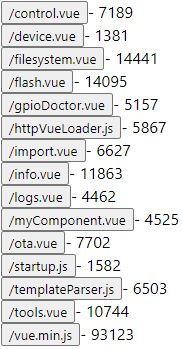
(Cfg size: 3584, change counter: 6, ota counter: 1, incomplete boots: 1 (might change to 0 if you wait to 30 sec)!insmod wrote:You did have BW20, i remember you posted an ali order screenshot with it.
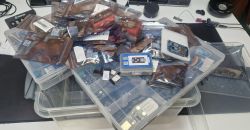
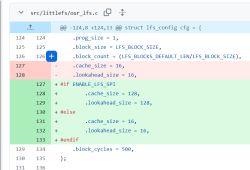
"why does it take two back click to go back from config to home page??""does flag 37 actually work??"
HTTP/1.1 200 OK
Content-Type: text/html
Content-Encoding: gzip
Content-Length: 1234
